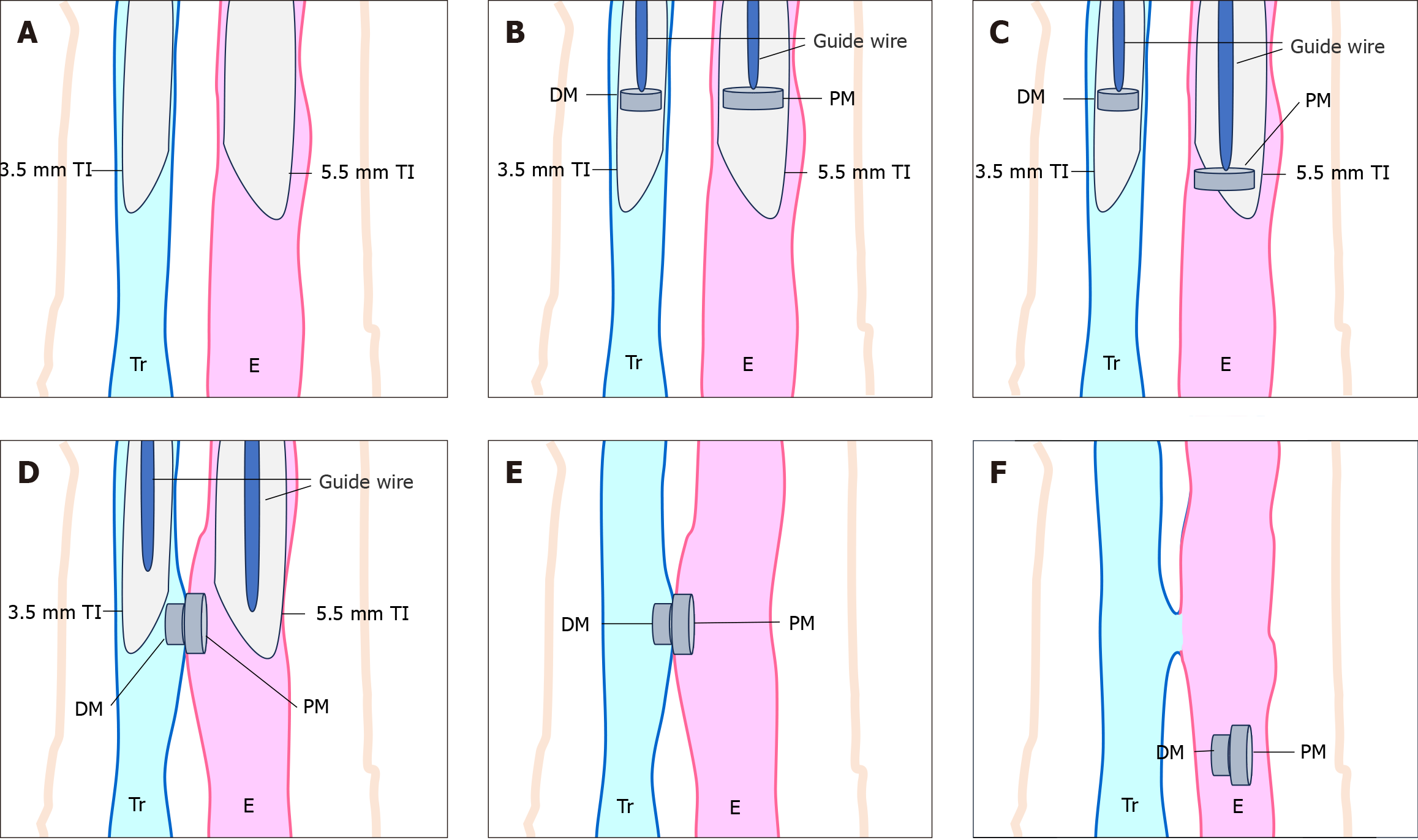Copyright
©The Author(s) 2024.
World J Gastrointest Surg. May 27, 2024; 16(5): 1385-1394
Published online May 27, 2024. doi: 10.4240/wjgs.v16.i5.1385
Published online May 27, 2024. doi: 10.4240/wjgs.v16.i5.1385
Figure 1 Schematic of the modified magnetic compression technique.
A: Inserting 3.5 mm and 5.5 mm tracheal intubation into the trachea and esophagus respectively; B: Placing the daughter magnet (DM) and parent magnet (PM) inside the tracheal intubation and pushing them to the intubation's end using a guide wire; C: Gently pushing the PM towards the end using the guide wire; D: Under the influence of magnetic force, the DM and PM attract each other, detach from tracheal intubation, and adhere to the tracheal and esophageal mucosa; E: Removing the tracheal intubation and guide wire; F: Separation of the magnets, entry into the esophagus, and expulsion from the body through the digestive tract. Tr: Trachea; TI: Tracheal intubation; E: Esophagus; DM: Daughter magnet; PM: Parent magnet.
- Citation: Meng H, Nan FY, Kou N, Hong QY, Lv MS, Li JB, Zhang BJ, Zou H, Li L, Wang HW. Establishment of acquired tracheoesophageal fistula using a modified magnetic compression technique in rabbits and its postmodeling evaluation. World J Gastrointest Surg 2024; 16(5): 1385-1394
- URL: https://www.wjgnet.com/1948-9366/full/v16/i5/1385.htm
- DOI: https://dx.doi.org/10.4240/wjgs.v16.i5.1385









